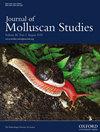First insight into the whole genome shotgun sequence of the endangered noble pen shell Pinna nobilis: a giant bivalve undergoing a mass mortality event
IF 1.2
4区 生物学
Q2 MARINE & FRESHWATER BIOLOGY
引用次数: 5
Abstract
The noble pen shell Pinna nobilis is a Mediterranean endemic and emblematic giant bivalve. Already considered by the late 20th century to be an endangered species, it is facing a dramatic and rapidly expanding epizooty that has decimated populations since mid-2016. The ecological importance of P. nobilis has prompted important investigations for conservation purposes. Here, we report a first analysis of the whole genome sequencing of this animal. This was performed on an Illumina HiSeq X platform using a single paired-end library of short fragments (2 × 150 bp). The de novo contig assembly had a total size of 584 Mb (96,738 contigs, N50 = 7.6 kb, with 0.4% of ambiguous nucleotides), representing 77.5% of the predicted genome size of 754 Mb. The P. nobilis genome is highly AT-rich, with a GC content of 35.6%. At 1%, heterozygosity was in the range of other bivalves with sequenced genomes. Over one-third (36.2%) of the genome consisted of repeated elements with a surprising larger number of short interspersed nuclear elements compared to other molluscan genomes. We were also able to reconstruct the full mitochondrial genome (c. 19 kb, with 12 protein-coding genes, 2 rRNA and 22 tRNA genes). In the context of the epizootic outbreak affecting P. nobilis, a first insight into the innate immune and stress-related genes found in the sequence is provided.首次了解濒临灭绝的贵族笔壳Pinna nobilis的全基因组鸟枪序列:一种正在经历大规模死亡事件的巨型双壳动物
高贵的笔壳珍珠贝是地中海特有的象征性巨型双壳类动物。20世纪末,它已经被视为濒危物种,自2016年年中以来,它正面临着一场急剧且迅速扩大的流行病,导致种群锐减。野豌豆的生态重要性促使人们对其进行重要的保护研究。在这里,我们报道了对这种动物的全基因组测序的首次分析。这是在Illumina HiSeq X平台上使用短片段(2×150bp)的单个配对末端文库进行的。从头重叠群组装的总大小为584Mb(96738个重叠群,N50=7.6kb,含0.4%的不明确核苷酸),占预测基因组大小754Mb的77.5%。nobilis的基因组富含AT,GC含量为35.6%。在1%时,杂合性在其他已测序基因组的双壳类的范围内。超过三分之一(36.2%)的基因组由重复元素组成,与其他软体动物基因组相比,短穿插的核元素数量惊人地多。我们还能够重建完整的线粒体基因组(c.19kb,具有12个蛋白质编码基因、2个rRNA和22个tRNA基因)。在影响P.nobilis的流行病爆发的背景下,首次深入了解了序列中发现的先天免疫和应激相关基因。
本文章由计算机程序翻译,如有差异,请以英文原文为准。
求助全文
约1分钟内获得全文
求助全文
来源期刊

Journal of Molluscan Studies
生物-动物学
CiteScore
3.00
自引率
8.30%
发文量
36
审稿时长
3 months
期刊介绍:
The Journal of Molluscan Studies accepts papers on all aspects of the study of molluscs. These include systematics, molecular genetics, palaeontology, ecology, evolution, and physiology. Where the topic is in a specialized field (e.g. parasitology, neurobiology, biochemistry, molecular biology), submissions will still be accepted as long as the mollusc is the principal focus of the study, and not incidental or simply a convenient experimental animal. Papers with a focus on fisheries biology, aquaculture, and control of molluscan pests will be accepted only if they include significant advances in molluscan biology. While systematic papers are encouraged, descriptions of single new taxa will only be considered if they include some ‘added value’, for example in the form of new information on anatomy or distribution, or if they are presented in the context of a systematic revision or phylogenetic analysis of the group.
 求助内容:
求助内容: 应助结果提醒方式:
应助结果提醒方式:


